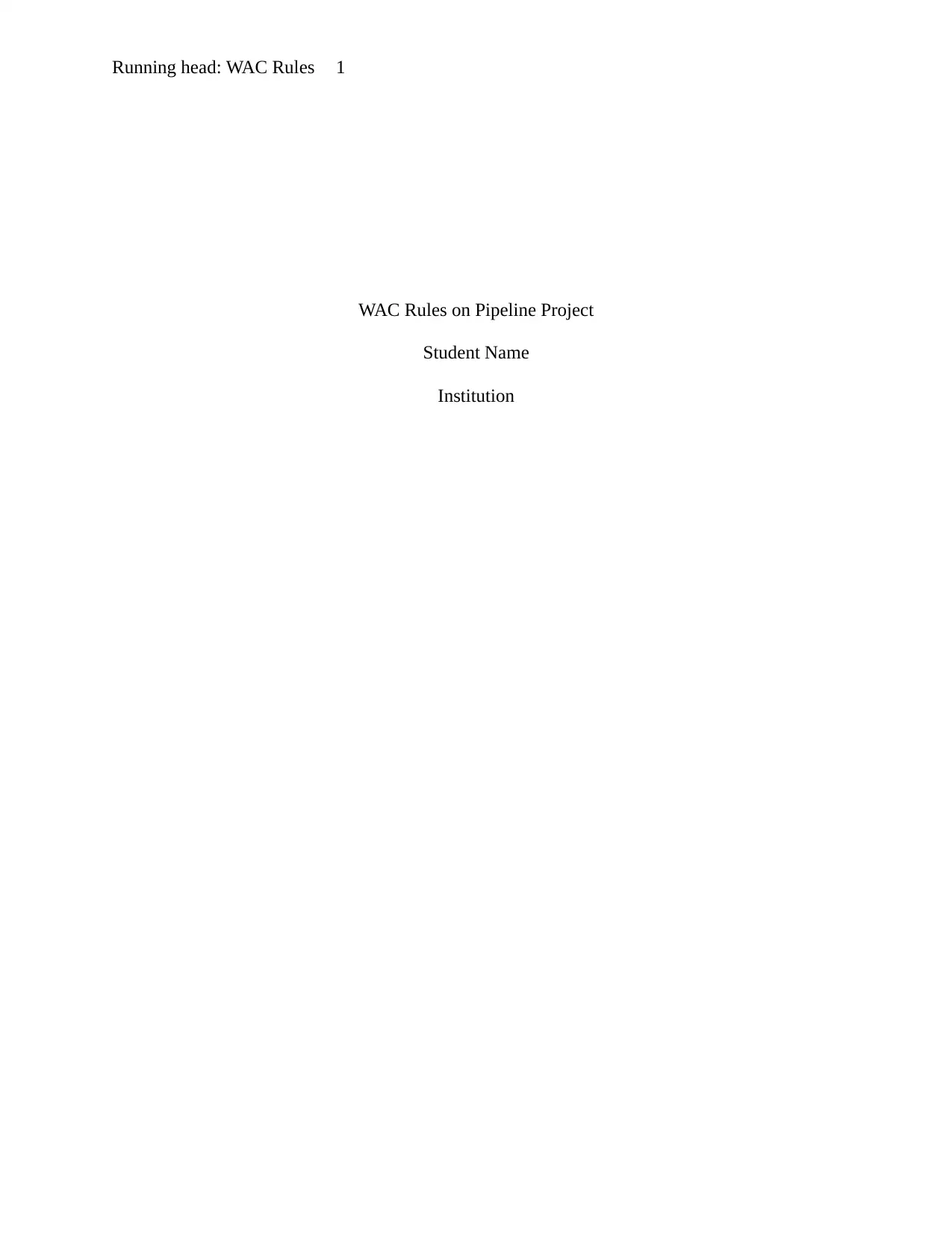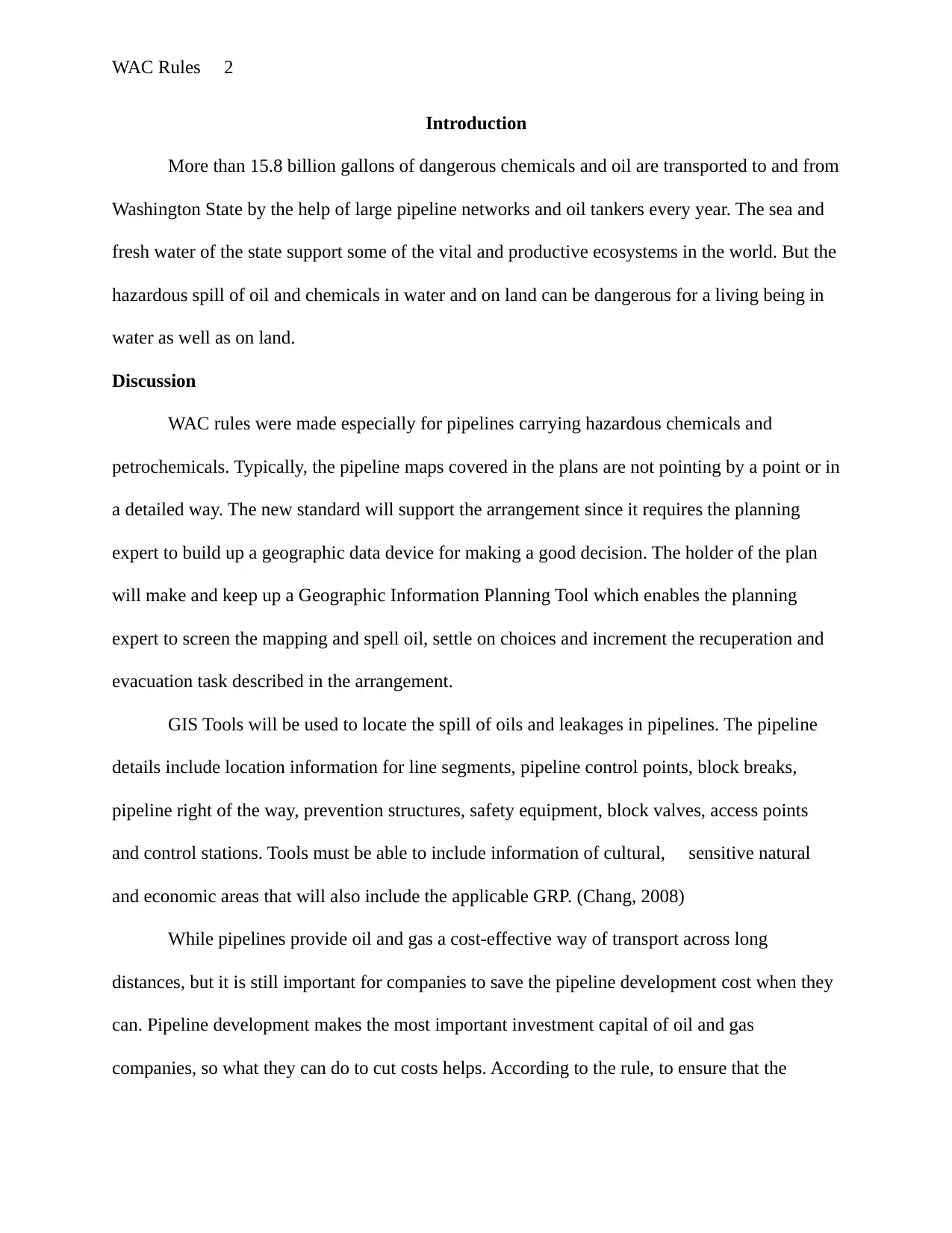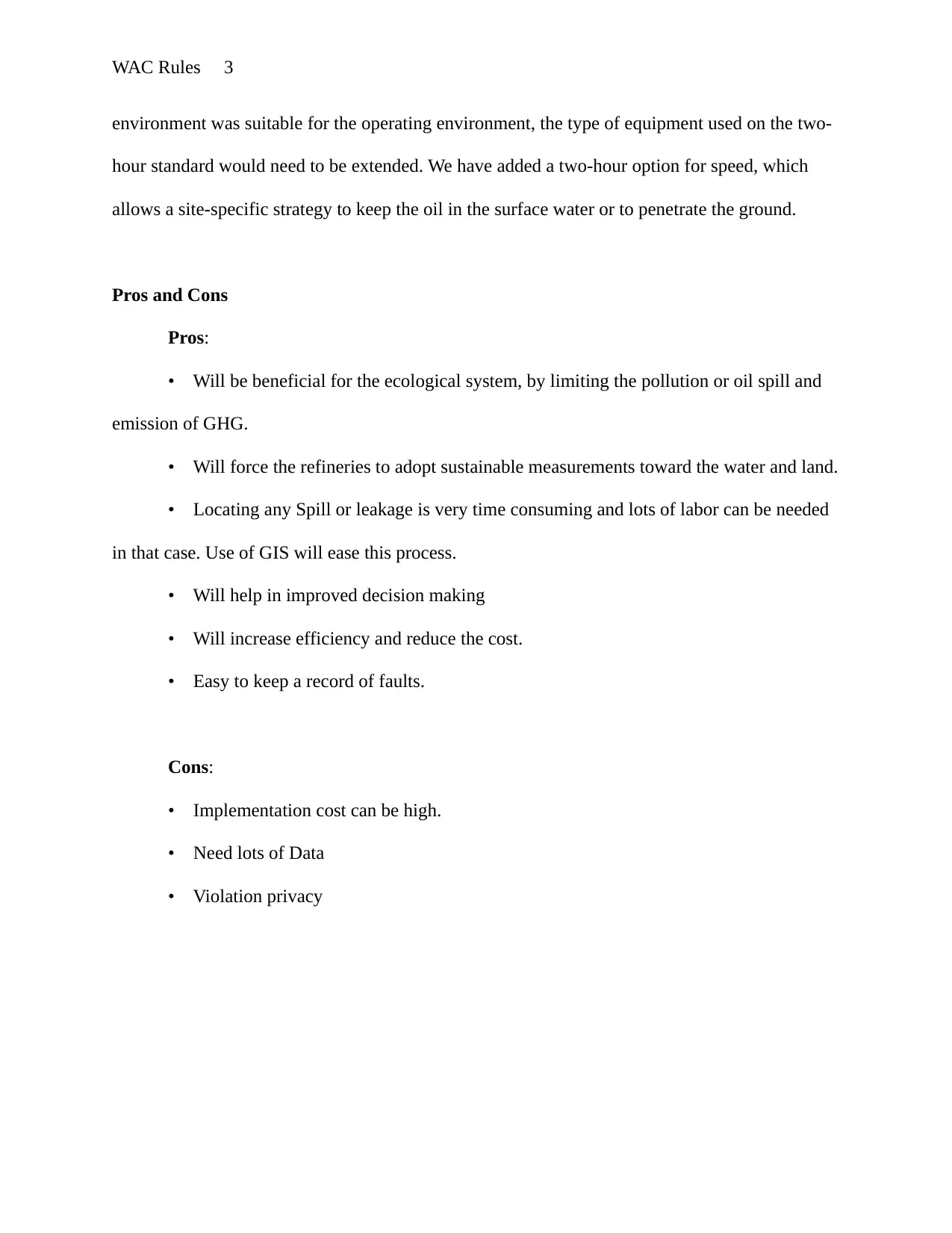WAC Rules on Pipeline Project
VerifiedAdded on 2019/09/16
|4
|531
|251
Report
AI Summary
This report discusses the Washington Administrative Code (WAC) rules related to pipeline projects, focusing on the transportation of hazardous chemicals and oil. It highlights the importance of these rules in protecting the environment and ecosystems. The report emphasizes the use of Geographic Information Systems (GIS) for locating spills and leaks, improving decision-making, and increasing efficiency. It also outlines the pros and cons of implementing these rules, including the potential for high implementation costs and privacy concerns. The report concludes by underscoring the need for sustainable practices in the oil and gas industry.
1 out of 4







![[object Object]](/_next/static/media/star-bottom.7253800d.svg)